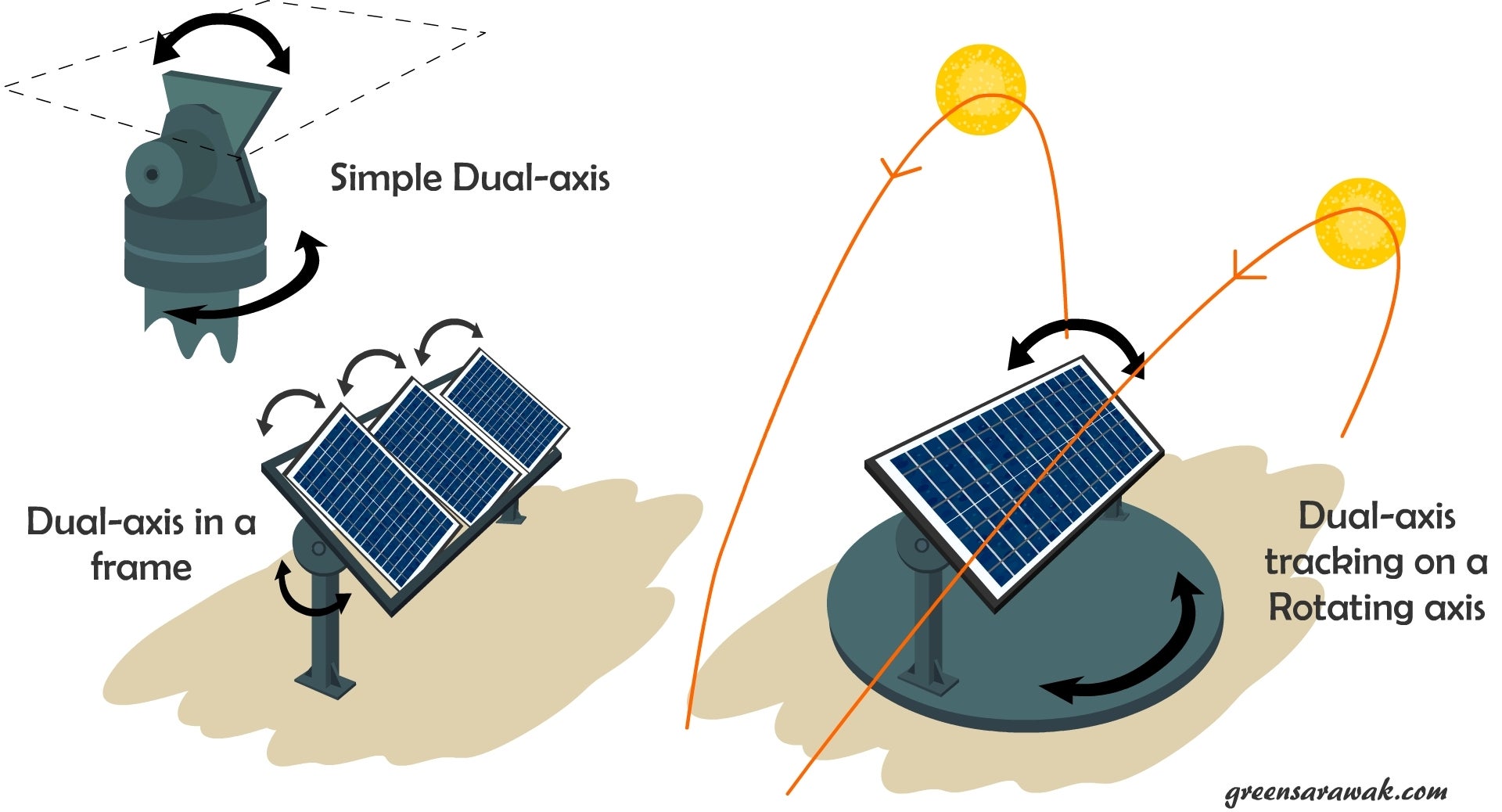Solar Tracker
What is a solar tracker?
A solar tracker is a device that directs a payload to the sun. The payload is usually a solar panel, parabolic trough, Fresnel reflector, lens or heliostat mirror.
For flat-panel photovoltaic systems, the tracker is used to minimize the angle of incidence between the incident sunlight and the photovoltaic panel, sometimes referred to as cosine error. Reducing this angle will increase the energy generated by a fixed amount of installed power generation capacity. In standard photovoltaic applications, 2008-2009 predicts that from 2009 to 2012, trackers can be used in at least 85% of commercial installations larger than 1 MW.
Solar trackers can make your solar panels follow the sun’s trajectory in the sky like sunflowers, so they can generate more solar energy. However, the price of solar tracking systems is high.
Is the extra solar output worth the extra cost of a solar tracker? In most cases, it makes more sense to install more solar panels.
The way the solar tracking system moves depends on the type of system. There are three types of sun tracking systems:
1. Passive solar tracker
The passive tracker contains a low-boiling liquid that evaporates when exposed to solar radiation. When the liquid evaporates, the tilt system becomes unbalanced. This imbalance causes the panel to tilt in the direction of the sun’s rays.
2. Manual solar tracker
Manual trackers require someone to physically adjust the panel at different times of the day to follow the sun. This is not always feasible, because you need someone to constantly monitor the sun and change the position of the solar panel system.
3. Active Solar Tracker
Active trackers rely on motors or hydraulic cylinders to change positions. The motor in the active tracker will move the photovoltaic panel so that it faces the sun. Although this is more convenient than a manual tracker, the moving parts inside the motor are easily damaged. This may result in higher maintenance costs during the life cycle of the system.
From there, solar trackers can be further classified according to the direction in which they move. Solar trackers can be:
Dual axis solar tracker
The tracker not only tracks the sun as it moves from east to west, but also tracks it as it moves from north to south. Two-axis trackers are more common in residential and small commercial solar projects where space is limited, so they can generate enough electricity to meet their energy needs. The dual-axis tracker can increase energy production by approximately 40%.
Single axis solar tracker
The single-axis tracker follows the position of the sun moving from east to west. These are usually used for utility-scale projects. Single-axis trackers can increase production by 25% to 35%.
What is the price of solar trackers?
Solar trackers can greatly increase the cost of photovoltaic solar installations. A standard 4 kW, ground-mounted solar system will cost approximately US$13,000. The cost of tracking equipment ranges from $500 per panel to more than $1,000 per panel.
If you include a single-axis tracking system on the same array, the cost will be as high as approximately $20,000. This is 57% higher than the cost of a fixed array, while the solar output is only increased by 35%.
The cost of a dual-axis tracking system is even higher, about $26,000. This is twice the cost of the entire fixed ground installation system!
